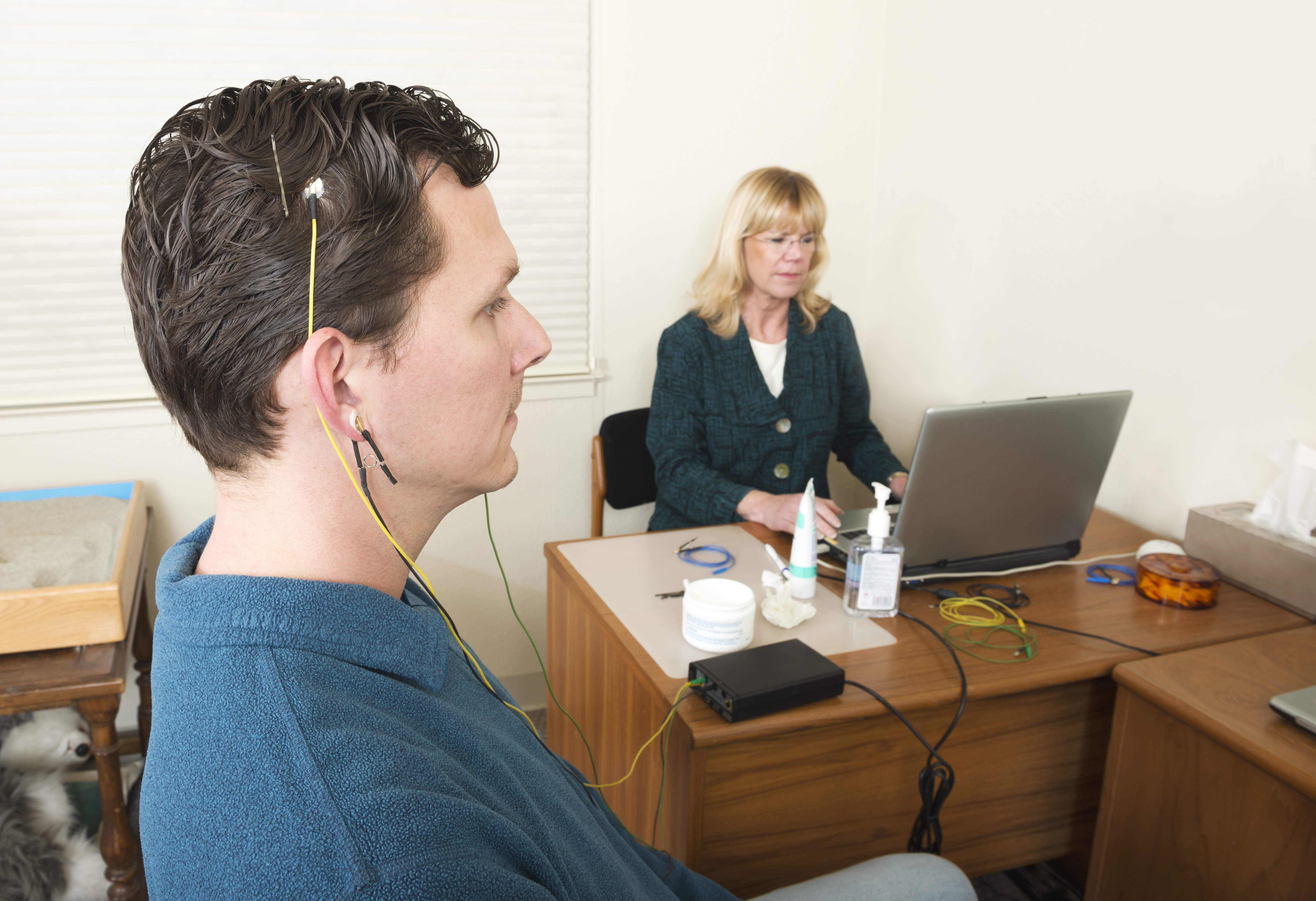What Conditions Can Biofeedback Help?
Table of Contents
Understanding Biofeedback
- Heart rate
- Breathing rate
- Brain waves
- Body temperature
- Sweating
Tracking how the body responds to therapy gives therapists valuable insights into potential anxiety triggers.

Contact Profound Treatment to Learn More
Our team is standing by to discuss treatment options with you. Your call is completely confidential and no obligation is required.
What Happens During Biofeedback?
During biofeedback collection, sensors are attached to the skin to track various bodily functions. Usually, where sensors are attached will depend on the type of biofeedback used. For example, during EEG neurofeedback that measures brain waves, the sensors would be put on your head. On the other hand, during heart rate variability biofeedback, sensors are placed on the chest or wrists to track the heart rate.
What to Expect From Biofeedback Sessions
- Ask you questions
- Go through different exercises
- See how you respond to different stimuli
- Teach relaxation techniques
How are Biofeedback and Operant Conditioning Related?
Different Types of Biofeedback Therapy
Depending on patient needs, different types of biofeedback therapy may be used. The type of biofeedback will usually depend on the condition being treated. The most common types of biofeedback are:
- Electroencephalogram (EEG) biofeedback: This is also known as EEG neurofeedback. It is a popular treatment method that tracks brain waves. EEG neurofeedback can treat mental health and behavioral disorders like addiction.2
- Electromyogram (EMG) biofeedback: EMG biofeedback measures how muscles respond to treatment methods. EMG treats conditions like chronic pain, headaches, and recovery of motor function.3
- Galvanic skin response training: Skin response measures how sweat glands respond to treatment. This can be used for anxiety or panic disorders that activate sweat glands.
- Temperature biofeedback: This measures changes in body temperature due to changing variables. Temperature changes can signify mental or emotional distress. Knowing these changes helps treat many conditions.
- Heart rate variability (HRV) biofeedback: HRV biofeedback measures the heart rate during treatment. HRV can be used for several conditions like cardiovascular issues, anxiety, and depression.
- Respiratory biofeedback: This helps therapists track the breath rate during treatment. Respiratory biofeedback uses breathing techniques to calm the mind and body.
What Conditions Can Biofeedback Help?
- Anxiety
- ADHD
- Asthma
- Pain
- Headaches
- High blood pressure
- Fibromyalgia
- Irritable bowel syndrome (IBS)
- Urinary incontinence
What Can You Expect from a Biofeedback Therapy Session?
- Questions about your life and struggles
- Activities to integrate different variables into the treatment process
- Tracking the body or mind’s response, such as brain waves in EEG neurofeedback
- Teaching coping mechanisms based on data revealed
- Going through exercises to relax the body and mind
- Tests to track your progress
Are There Any Risks to Biofeedback Therapy?
Does Biofeedback Therapy Help with Substance Use Disorders?
Biofeedback therapy can be beneficial for substance use disorders. EEG neurofeedback is often a good option during substance abuse treatment.
How Does Biofeedback Therapy Help with Substance Use Disorders?
Identifying the triggers that could make a person more likely to relapse is important. EEG neurofeedback can track brain activity that signals triggers. Therapists can then provide coping mechanisms to calm the mind during stressful moments.
How Effective is Biofeedback Therapy?
Studies have shown that biofeedback is effective in treating many different conditions. After receiving biofeedback treatment, patients usually report significant improvements. It’s approved for treating conditions like mental health, addiction, and chronic pain.5
How Long Does Biofeedback Therapy Last?
A typical biofeedback session will last between thirty and sixty minutes. The total length of the treatment program will depend on the individual and their condition. Treatment programs usually last between eight to twenty sessions.

Biofeedback Therapy to Help Chronic Pain
Studies have shown that biofeedback therapy can benefit those who struggle with chronic pain in the short and long term. Biofeedback for chronic pain can be combined with other treatment methods or be conducted as a stand-alone treatment option.6
How Can Biofeedback Treat Chronic Pain?
Can Biofeedback Therapy Be Combined with Other Treatment Options?
Psychotherapy
Psychotherapy is a common treatment method for substance abuse and mental health. EEG neurofeedback can benefit a traditional psychotherapy program by gaining more insight into how brain waves respond to different variables.
Medication Management
Meditation
EEG neurofeedback is commonly used in combination with meditation and other mindfulness activities. Monitoring brain waves through EEG neurofeedback reinforces the positive effects that meditation and mindfulness can have.
Resources
- 1https://www.ncbi.nlm.nih.gov/pmc/articles/PMC2939454/
- 2https://www.ncbi.nlm.nih.gov/pmc/articles/PMC4892319/
- 3https://www.ncbi.nlm.nih.gov/pmc/articles/PMC6464966/
- 4https://www.mayoclinic.org/tests-procedures/biofeedback/about/pac-20384664
- 5https://www.ncbi.nlm.nih.gov/pmc/articles/PMC6854143/
- 6https://pubmed.ncbi.nlm.nih.gov/27307013/
Useful Links
Licensed by the State Department of Health Care Services.
Profound Treatment License No: 191047CP Exp. 1/31/25
Profound Healing Centers License No: 191092AP Exp. 7/31/25
Profound Treatment License No: 191047AP Exp. 8/31/24
Profound Treatment License No: 191047BP Exp. 5/30/24
Profound Treatment License No: 191047DP Exp. 9/30/25








